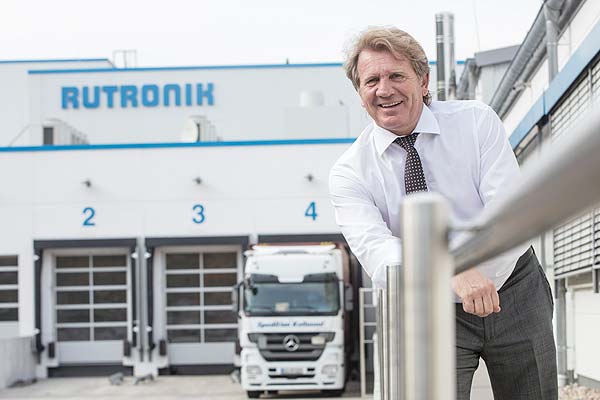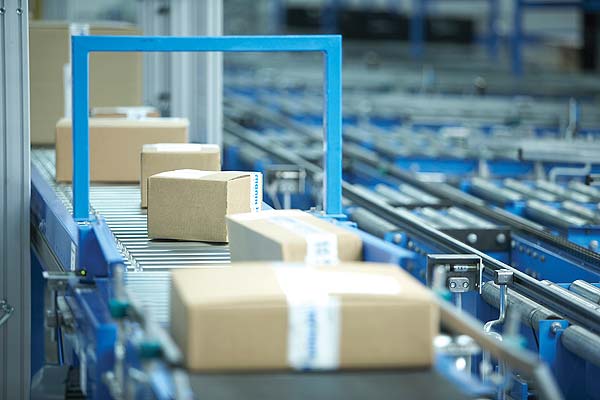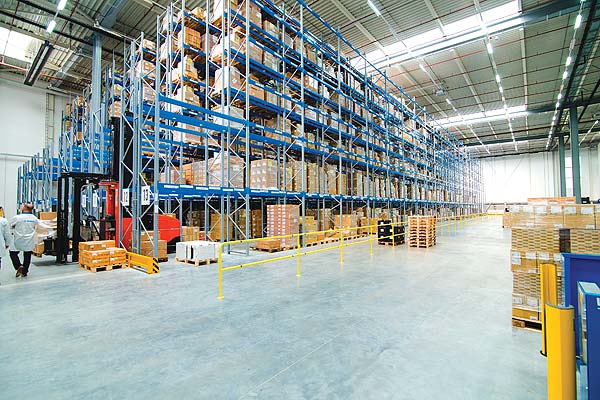 Due to the worldwide shortage of passive electronic components, manufacturing companies are having an increasingly difficult time planning their production. In order to secure supplies for its customers, Rutronik has entered into a long-term agreement with Yageo for ceramic capacitors and resistors. As a result, it can guarantee supplies through mid-2020. In the interview, Thomas Rudel, CEO of Rutronik, informs about measures to counter the allocation, gives recommendations to customers and talks about the future of distribution.
Due to the worldwide shortage of passive electronic components, manufacturing companies are having an increasingly difficult time planning their production. In order to secure supplies for its customers, Rutronik has entered into a long-term agreement with Yageo for ceramic capacitors and resistors. As a result, it can guarantee supplies through mid-2020. In the interview, Thomas Rudel, CEO of Rutronik, informs about measures to counter the allocation, gives recommendations to customers and talks about the future of distribution.
The industry is worried about passive components. Especially MLCCs, thin-film and thick-film resistors are extremely short in supply. Some industry insiders call it the worst allocation situation ever seen. Would you agree or is it rather a hype?
It is a matter of fact that there is a current shortage of passive components in general, and MLCCs, resistors, and some semiconductors in particular. In the past years the industry has not faced an allocation situation of this magnitude.
How can a distributor manage such an extreme shortage situation?
Distributors can manage and influence allocation to a certain extent making a key difference for the customers. Rutronik already increased the warehouse capacity last year. Only due to the excellent relationships with our manufacturers we were able to increase the supply quantities considerably. In addition to regular communication we hold periodic meetings and negotiations at top management level. This way we made an agreement with Yageo to ensure supplies of ceramic capacitors and resistors through mid-2020. Other critical parts are scheduled until end of 2020. We are able to react quickly to changes as our orders are constantly being monitored and dedicated teams are available for escalation as necessary.
Furthermore, we hired more than 50 new employees for critical components in our Logistics center in Eisingen. They are handling the extremely increased volumes while maintaining our quality standards. As manufacturers are increasingly delivering mixed product types bundled on a pallet, our warehouse handles extensive sorting and storing processes.
In order to further expedite deliveries we have optimized our processes and established exception process flows such as for an increased number of packages or express deliveries. This additional effort certainly impacted our freight costs. Additionally, Rutronik has invested in our internal transportation systems technology aiming at a quicker throughput of the product in the warehouse.
Another important step are trainings for our field sales engineers and product managers enabling them to suggest alternative products to our customers or make recommendations for the redesign with smaller case sizes. However, most producers prefer to discontinue non profitable products instead. Rutronik does offer this value added service also for passive components which is a genuine competitive advantage. Due to increasingly higher handling costs with very low margin business with passive components is not always profitable.
 Even those planning long in advance do currently have issues with the above mentioned product types. Is there a way to make forecasting and supply chain solutions attractive for your customers under these circumstances?
Even those planning long in advance do currently have issues with the above mentioned product types. Is there a way to make forecasting and supply chain solutions attractive for your customers under these circumstances?
Absolutely! The situation would be even worse without adequate planning in advance. Those customers working closely together with us, transmitting their forecasts on a regular basis or using logistics agreements are in a much better situation. Therefore, we strongly recommend our customers to order well in advance and take advantage of our logistics solutions. We offer a variety of solutions and added services which can be combined according to the customers’ individual needs.
During a distribution forum end of April it was said that some manufacturer prefer to deliver the larger volumes of the leading consumer OEMs at the expense of medium sized customers. What is Rutronik’s experience? In other words, how do you currently work with manufacturers of passive components especially for the affected product groups MLCC and resistors? How does Rutronik manage internally the assignation by customer?
The decision of assignation of critical product is based on the following. On the one hand we look at customers we have been successfully working with for a long period of time and we deliver the needed quantities despite allocation as far as possible. On the other hand we deliver to customers who do not only order MLCCs and resistors but also other products. Thus, we make sure our customers can keep their production running and we supply the whole range of the ordered product mix. Therefore customers with a broad product mix are especially important to us.
In relation to medium size customers: Rutronik makes more than 80 percent of its turnover with this very important customer group. At the same time it is important to know that Rutronik holds approximately 40 percent market share of C parts in Europe. This purchasing volume puts Rutronik in the position of negotiating at a level playing field with e.g. an Asian OEM.
The majority of our manufacturers are currently investing in increasing their production capacities. These investments will eventually lead to expected price increases, for example from Murata and Samsung.
MLCC manufacturers always aim at the maximum production output possible. That means they focus on the component size allowing for production of the largest number of components possible from the same raw material. Following is an example of case sizes 0603 and 0402: Due to its geometric characteristics the production output from the same raw material of case size 0402 capacitors is four times higher than of the 0603 case size.
Murata is extending their legacy program, including components without any increase in production to be expected. Almost every second Murata product at Rutronik is affected.
Samsung EM increases their productivity by eliminating certain non-standard components from their portfolio.
Yageo, however, had already been investing at least half of the turnover in their production lines since 2016. Thus, they increased their production capacities for resistors and MLCCs significantly during the past 3 years despite the fact that these product groups used to be unprofitable. With a world market share of more than 25 percent for both product groups combined, this strategy has a decisive positive influence on global availability. Thanks to our new agreement with Yageo, our customers can benefit directly from these increased capacities.
 What are your recommendations to the customers these days regarding design in, BOM and second source approvals, etc.?
What are your recommendations to the customers these days regarding design in, BOM and second source approvals, etc.?
For new designs or re-designs it is important to use the smallest case size possible, because the manufacturers prefer to produce smaller case sizes. Another recommendation is to approve as many alternative manufacturers as possible for each board (or PCB).
Do you consider switching to AEC Q200 is a good idea due to alleged better availability of automotive components?
Yes, indeed! Several manufacturer have better availability of some products as automotive qualified products can not only used in the automotive industry but also in the industrial sector. Of course, it is much more attractive for the manufacturers to supply the same product for different markets. However, it is recommended to always check availability case by case as there might be exceptions.
On the one hand manufacturers assert that they increased capacities and on the other hand customers claim that it is not the case or at least not sufficient as production capacities were only reassigned to more feasible products. You as a distributor are positioned in between. How do you manage this situation?
It is important to mention that especially for these products we have been seeing high pressure on pricing for quite some time. Year after year prices declined and that was mainly caused by those customers complaining most these days. In consequence these products and product groups were barely profitable preventing manufacturers to invest in new production capacities. Rutronik as a distributor was exposed to the same situation as well.
In the meantime capacities are being increased, however, installing production may take at least one or two year. In the interim we manage the situation by virtue of our excellent relationships with the manufacturers, securing the volumes needed for continuous supply of our customers.
How important is pricing? There are rumors that premium fees are being paid in order to get product. Can you confirm that?
Pricing is particularly important in relation to investment in added capacities as short term return of investment of new production capacities can only be accomplished by price increases.
At least in Europe and via Rutronik no additional product is released by means of premium fees. In some cases manufacturers might charge additional costs for deliveries at reduced lead time.
Evidently, we need to forward any manufacturer price increase which is a considerable administrative effort (for the latest price increase of resistors close to 100.000 order lines in our system needed to be amended manually).
When will allocation end?
We do not expect allocation to be over any time soon due to several reasons. Supply shortages are caused by drastic demand increase due to increasing electrification of many products and extremely high global demand, as well as many manufacturers focusing on smaller case sizes. In addition, the launch of the new mobile network 5G may cause a peak in demand for smart phones which may aggravate the supply situation. Planned production increases can only compensate this impact to a limited extend. Furthermore, a shortage of raw material is to be expected, including packaging material such as e.g. reels! Also environmental and energy policy related restrictions need to be taken into account, for example in China. Some sub-suppliers even had to close their production facilities, or relocated to other countries. All these effects are rather unpredictable and not projectable.
Rutronik | https://www.rutronik.com
![]()


